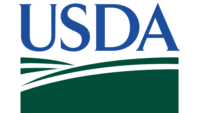LISTERIA MONOCYTOGENES
Enemy No. 1 for the Ready-To-Eat Industry
By John N. Sofos, Ph.D.,
University Distinguished Professor
Colorado State University,
Center for Meat Safety & Quality
If for the fresh meat industry the No. 1 enemy is Escherichia coli O157:H7 (E. coli O157 or O157), the corresponding concern for the ready-to-eat (RTE) meat and poultry sector is Listeria monocytogenes (Listeria or Lmono), the pathogen that causes listeriosis. While O157 is responsible for most bacterial contamination recalls of fresh beef, Lmono holds first place in the RTE meat and poultry industry. Although Lmono has been known as an animal pathogen since the early 1990s, it was not until the early 1980s that it was documented as a foodborne cause of severe and fatal human illness. Foods implicated in the transmission of Lmono to humans include luncheon and deli meats, hot dogs, raw vegetables, unpasteurized milk and products made with unpasteurized or raw milk.
Characteristics of Lmono that make it a headache for the industry include its widespread presence in the environment, its ability to survive in adverse conditions, including high levels of salt and cold storage — where it still grows, though at slower rates than in warmer settings — and its high fatality rate, which can reach 20 to 30 percent, much higher than that of O157, Salmonella and Campylobacter. High-risk groups for listeriosis are pregnant women, neonates, immuno-deficient individuals, cancer patients, organ transplant recipients, HIV-infected persons, those undergoing immunosuppressive therapy and individuals of advanced age.
Lmono causes abortion, stillbirth, septicemia, meningitis and other undesirable conditions in sensitive humans. In pregnant women it causes flu-like illness, but it crosses the placenta attacking the fetus and resulting in abortion, stillbirth or acutely ill baby, mostly during the third trimester. In healthy adults it may only cause mild, flu-like illness.
The natural habitat of this pathogen is soil, water, sewage, decaying vegetation and silage. The environmental contamination results in feed and animal contamination and fecal excretion completing the contamination cycle. In the processing-plant environment Lmono can establish itself, multiply and persist. In addition to raw ingredients, specific environmental sources include cutting rooms, drains, conveyor belts, floor mats, foot baths, chilling rooms, coolers, freezers, condensate, compressed air, walls, ceilings, various equipment, cleaning aids, sausage peelers, hands and packaging materials.
Control of Lmono should be based on proper and documented sanitation and good hygienic practices, adequate product cooking, prevention of cross- or re-contamination, and antimicrobial alternatives as required by the interim final rule (Fed. Reg.: June 6, 2003; Vol. 68, N# 109; Pp. 34207-34254; 9 CFR Part 430). The alternative involves properly designed and documented sanitation programs as well as microbial testing programs and more intensive FSIS verification. The second alternative requires application of a treatment (may be antimicrobial agent) that reduces numbers or eliminates Lmono, or antimicrobial agent/processes that inhibit growth. The first alternative is met when both, treatments or agents that kill and inhibit growth are applied. When an establishment is involved in positive testing for the pathogen at the post-lethality stage of processing of a product that allows growth of Lmono during storage, it should select approved interventions that qualify under the above and make them part of their HACCP plan or prerequisite programs.
In general, controls applied by the industry should include: management of supplies; environmental microbial sampling/testing programs; effective and documented sanitation standard operating procedures (SSOPs) and elimination of niches and harborage sites; proper risk and hazard analysis; good manufacturing practices (GMPs); HACCP; proper and effective worker training and SOPs; control of rework and product reprocessing; effective product lotting and limiting the size of product lots; effective product coding and traceability or recall plans; and proper recordkeeping, documentation and verification activities. Other efforts may include upgrading of older plants (drains, traffic, etc), and use of post-lethality lethal processes (physical, chemical, biological and combinations ofhurdles). Plant audits should address plant and equipment cleaning and sanitation programs and procedures, good hygienic practices by personnel, GMPs, written SOPs, employee training, HACCP monitoring and corrective action activities, and record maintenance.
Lethality treatments applied during product processing include heating, fermentation and drying. Physical post-lethality treatments include heating (e.g., steam, hot water, radiant, etc.) applied pre- or post-packaging, high-pressure processing, freezing and consumer re-heating before consumption. Chemical post-lethality antimicrobial treatments may include application of chemicals in the formulation (e.g., lactate/diacetate combinations), and chemical solutions (e.g., organic acids such as lactic, acetic and octanoic, salts such as benzoate and sorbate, acidic calcium sulfate, acidified sodium chlorite, lauric arginate, and others) applied as dipping or spraying solutions. Biological hurdles include lactic acid bacteria, nisin, pediocin, bacteriophages, etc. These interventions may be applied as ingredients, solutions by spraying or dipping, inclusion in packaging films, encapsulated, or as combinations. It should be noted that this list is not complete and that not all proposed antimicrobials are approved for use at this stage. For a complete list of FSIS-approved or available antimicrobials and conditions for use, interested establishments should consult the latest version of FSIS Directive 7120.1 (www.fsis.usda.gov/OPPDErdad/FSISDirectives/7120.1Amend12.pdf) and the FSIS Compliance Assistance Technology Information Tables (www.fsis.usda.govRegulations_&_Policies/
New_Technology_Table_Feb_06/index.asp).
New_Technology_Table_Feb_06/index.asp).
Contact John N. Sofos, Ph.D., at Colorado State University, via phone at (970) 491-7703, fax at (970) 491-5326, or e-mail at john.sofos@colostate.edu




Report Abusive Comment